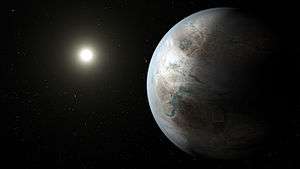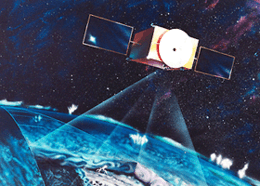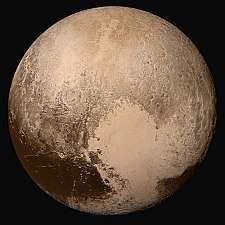C/2015 V2
_by_Kees_Scherer.jpg) C/2015 V2 (Johnson) on 2017, 3 April. | |
| Discovery | |
|---|---|
| Discovered by |
J. A. Johnson Catalina Sky Survey (703)[1] |
| Discovery date | 3 November 2015[1] |
| Orbital characteristics A | |
| Epoch | 10 February 2016 |
| Observation arc | 19 days[1][2][3][4][5] |
| No. of observations used | 279[1][2][3][5][6] |
| Perihelion | 1.63714AU[2] |
| Eccentricity | 1.00145[3] |
| Orbital period | 14.4 Myr (incoming) |
| Inclination | 49.87499°[3] |
| Next perihelion | 12 June 2017[3] |
C/2015 V2 (Johnson) is a hyperbolic comet discovered on 3 November 2015 by Jess Johnson (Catalina Sky Survey) at an apparent magnitude of 17.1 using a 0.68-meter (27 in) Schmidt–Cassegrain telescope.[1][2][3][4][5] Its incoming orbit had a Semimajor Axis of 59,200 AU (0.94 light years), but will have a hyperbolic orbit after leaving the solar system, with an eccentricity of 1.0009. The comet is expected to be able to be seen with binoculars in late May 2017 in the Northern Hemisphere.[7]
References
- 1 2 3 4 5 "MPEC 2015-V44 : COMET C/2015 V2 (JOHNSON)". IAU Minor Planet Center. 2015-11-05. Retrieved 2015-11-05. (CK15V020)
- 1 2 3 4 "MPEC 2015-V62 : COMET C/2015 V2 (JOHNSON)". IAU Minor Planet Center. 2015-11-06. Retrieved 2015-11-25. (CK15V020)
- 1 2 3 4 5 6 "MPEC 2015-W63 : OBSERVATIONS AND ORBITS OF COMETS". IAU Minor Planet Center. 2015-11-23. Retrieved 2015-11-25. (CK15V020)
- 1 2 "JPL Small-Body Database Browser: C/2015 V2 (Johnson)" (last observation: 2015-11-22; arc: 19 days). Jet Propulsion Laboratory. Retrieved 2015-10-25.
- 1 2 3 "MPEC 2015-W09 : COMET C/2015 V2 (JOHNSON)". IAU Minor Planet Center. 2015-11-17. Retrieved 2015-11-25. (CK15V020)
- ↑ "MPC: Orbits/Observations Database: C/2015 V2 (Johnson)" (last observation: 2015-11-22; arc: 19 days). The Minor Planet Center. Retrieved 2015-10-25.
- ↑ http://www.maz-online.de/Brandenburg/Komet-Johnson-zieht-ueber-den-Mai-Himmel
This article is issued from
Wikipedia.
The text is licensed under Creative Commons - Attribution - Sharealike.
Additional terms may apply for the media files.




